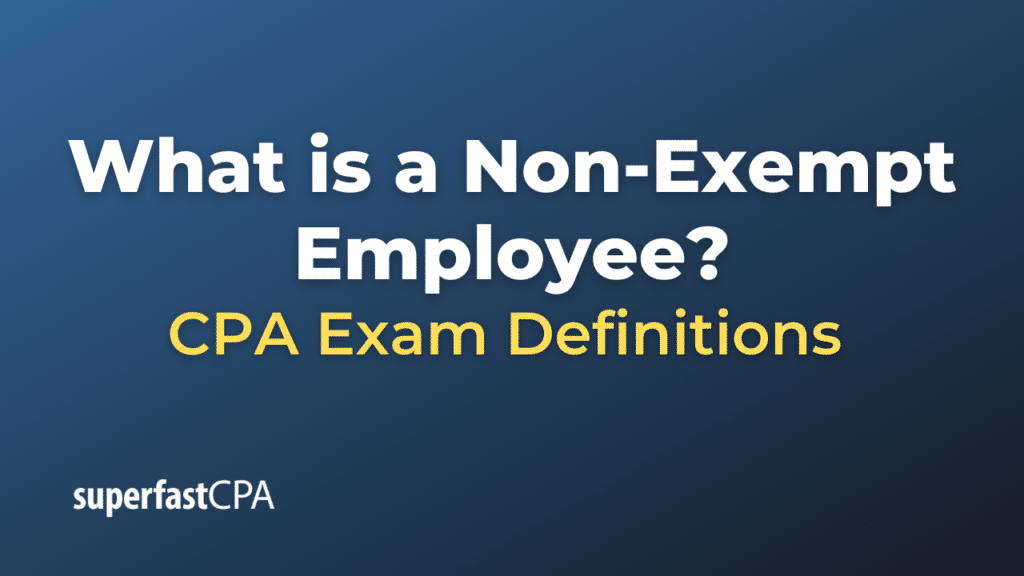Non-Exempt Employee
A non-exempt employee, according to U.S. labor law, is an employee who is not exempt from the Fair Labor Standards Act (FLSA) regulations, most notably, the overtime pay provision.
This means that non-exempt employees are eligible for overtime pay. If a non-exempt employee works more than 40 hours in a workweek, they must receive at least one and a half times their regular pay for each hour worked beyond 40 hours.
Examples of non-exempt employees may include hourly wage earners in roles like customer service, administrative assistance, manual or labor work, technical support, and others. However, whether an employee is considered non-exempt can depend on a variety of factors, including their specific job duties and salary.
For instance, let’s take an administrative assistant named Sarah who works at a mid-sized company. Sarah is paid an hourly wage. This week, she worked 45 hours to help prepare for an important meeting. Since she is a non-exempt employee, she is eligible for overtime pay. So, for the 5 hours she worked over the standard 40-hour workweek, Sarah would be paid at one and a half times her regular hourly rate.
Example of Non-Exempt Employee
Let’s consider John, who is an hourly worker at a warehouse. He’s classified as a non-exempt employee under the Fair Labor Standards Act (FLSA).
His standard work week is 40 hours, Monday through Friday, 8 hours each day. He earns $20 per hour as his regular rate of pay.
One week, due to an influx of shipments, John was asked to work an additional 10 hours. In this case, he worked a total of 50 hours during the week.
Since John is a non-exempt employee, his employer is required by law to pay him an overtime rate of 1.5 times his regular rate for any hours worked beyond 40 in a week.
So, for the 40 regular hours, John will earn 40 hours * $20/hour = $800.
For the additional 10 hours of overtime, he will earn 10 hours * $20/hour * 1.5 = $300.
Therefore, for that week, John’s total pay, including overtime, will be $800 + $300 = $1,100.
This example illustrates how non-exempt employees are compensated for overtime, ensuring they receive fair pay for the extra hours they work.













